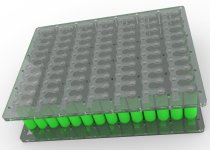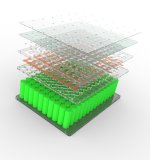lazy_mosquito
100 mW
- Joined
- Jan 27, 2014
- Messages
- 43
Hi,
I am planning to make a battery for my bullitt. The weight is not that important because it is a cargobike and the battery will be placed low in the bike.
I have a bafang bbshd and my former battery died on me after 6 years of service. This was a 52V 14s8p of 21 AH. I would like to improve my range, that's why i would choose for a 14s10p. i would use quality batteries and I am in doubt between the Samsung 18650 35E, the Sanyo NCR18650GA 3350mAh or the Samsung INR21700-50E (14s8p)
My BBSHD is set at 25A in the controller.
I would make my own batterycase with a no-weld system. i will share the plans when they are finished.
My main question is, is it better to make 2 14s5p battery packs and put them in parallel instead of one monolithic pack, this for easier charging and heat production because of the size of the battery?
And any suggestions for the choice of batteries ? I drive mainly on flat road and with a maximum of 40km/h
I am planning to make a battery for my bullitt. The weight is not that important because it is a cargobike and the battery will be placed low in the bike.
I have a bafang bbshd and my former battery died on me after 6 years of service. This was a 52V 14s8p of 21 AH. I would like to improve my range, that's why i would choose for a 14s10p. i would use quality batteries and I am in doubt between the Samsung 18650 35E, the Sanyo NCR18650GA 3350mAh or the Samsung INR21700-50E (14s8p)
My BBSHD is set at 25A in the controller.
I would make my own batterycase with a no-weld system. i will share the plans when they are finished.
My main question is, is it better to make 2 14s5p battery packs and put them in parallel instead of one monolithic pack, this for easier charging and heat production because of the size of the battery?
And any suggestions for the choice of batteries ? I drive mainly on flat road and with a maximum of 40km/h



